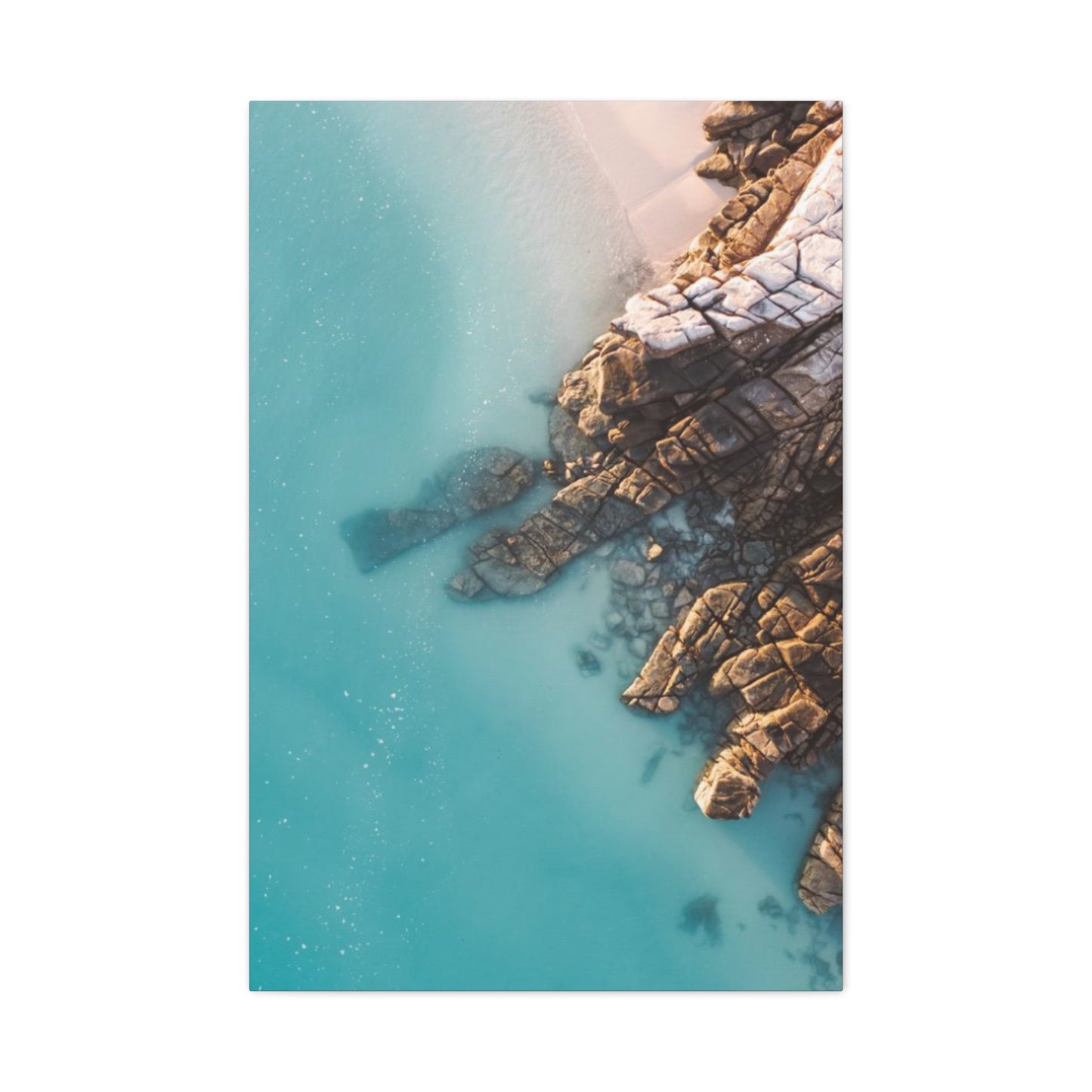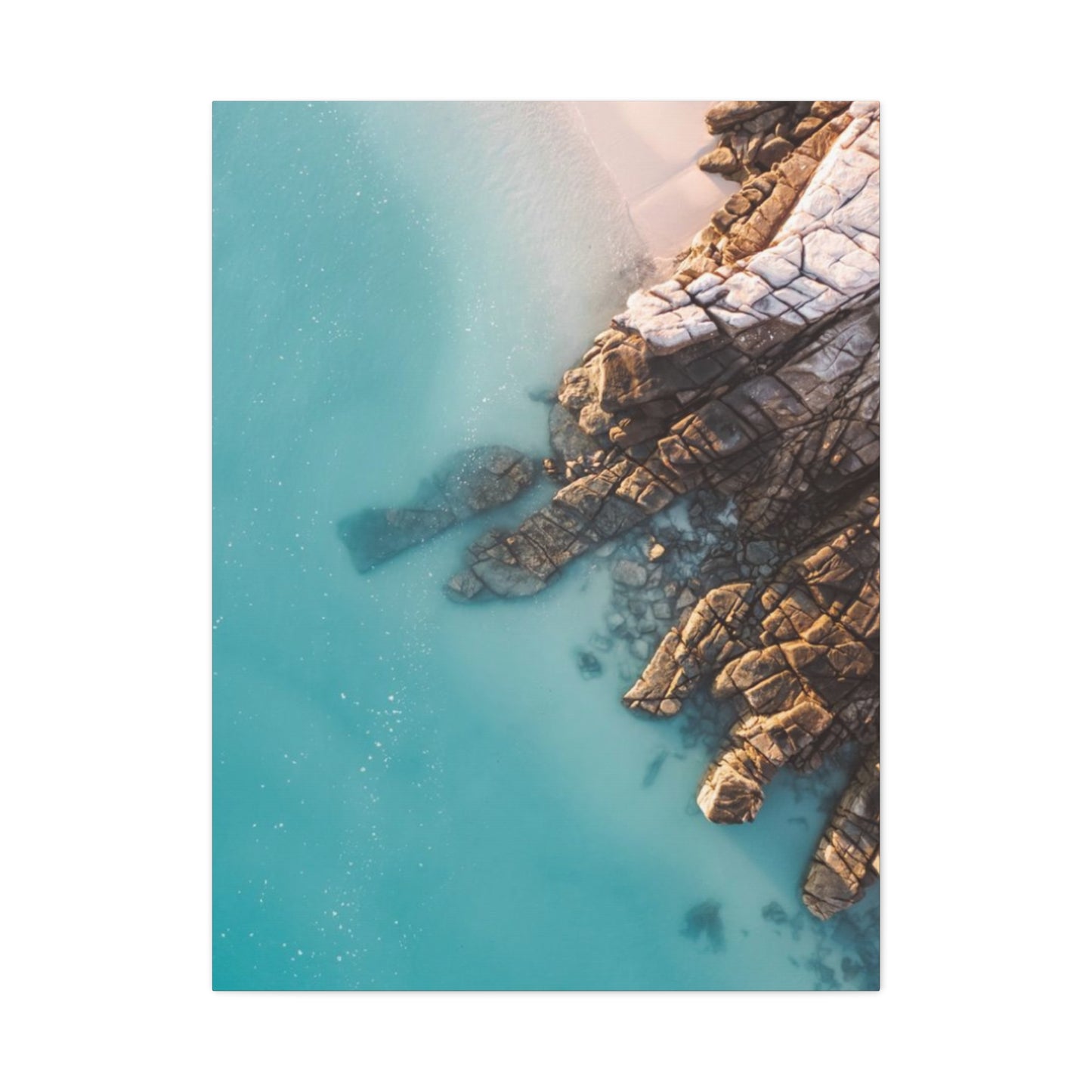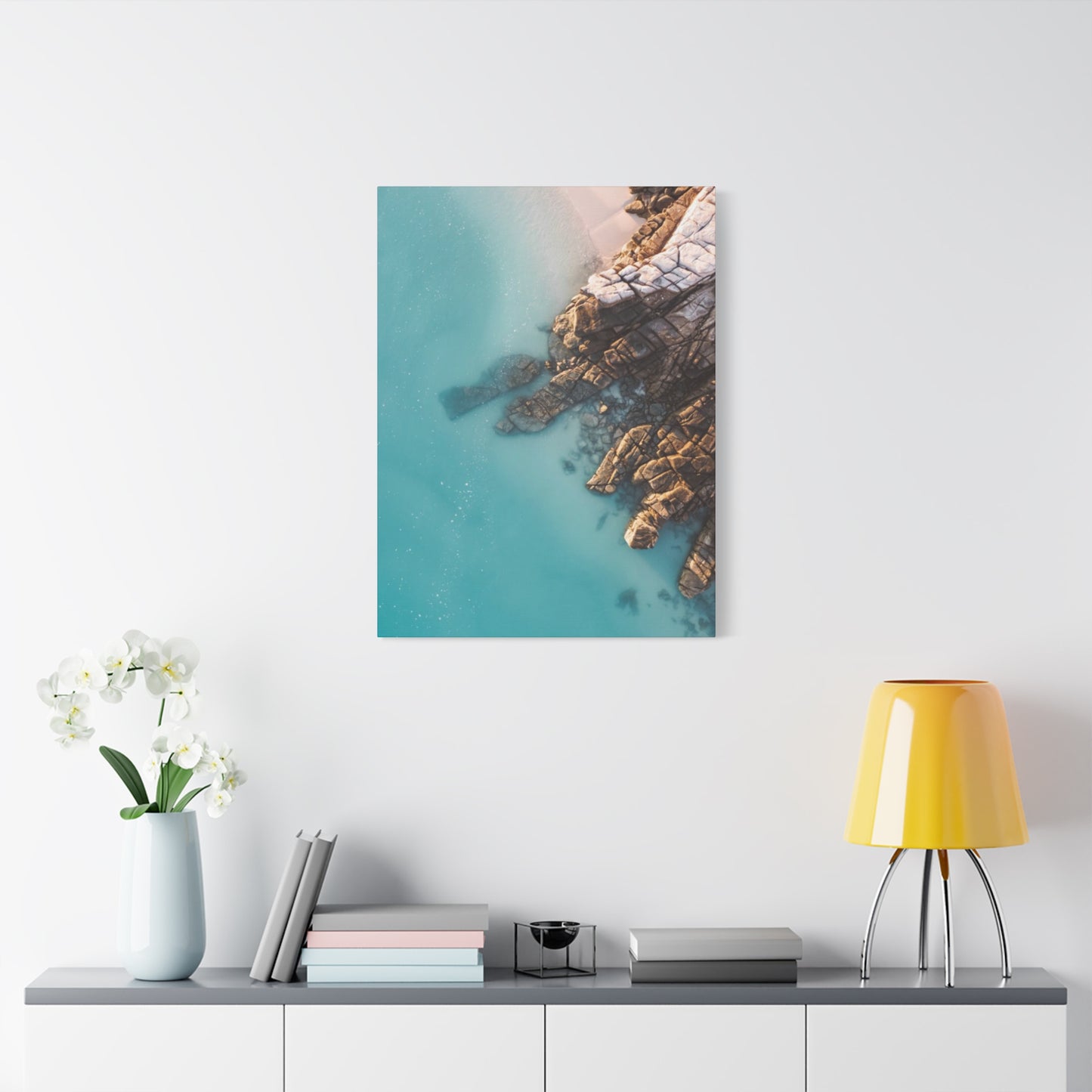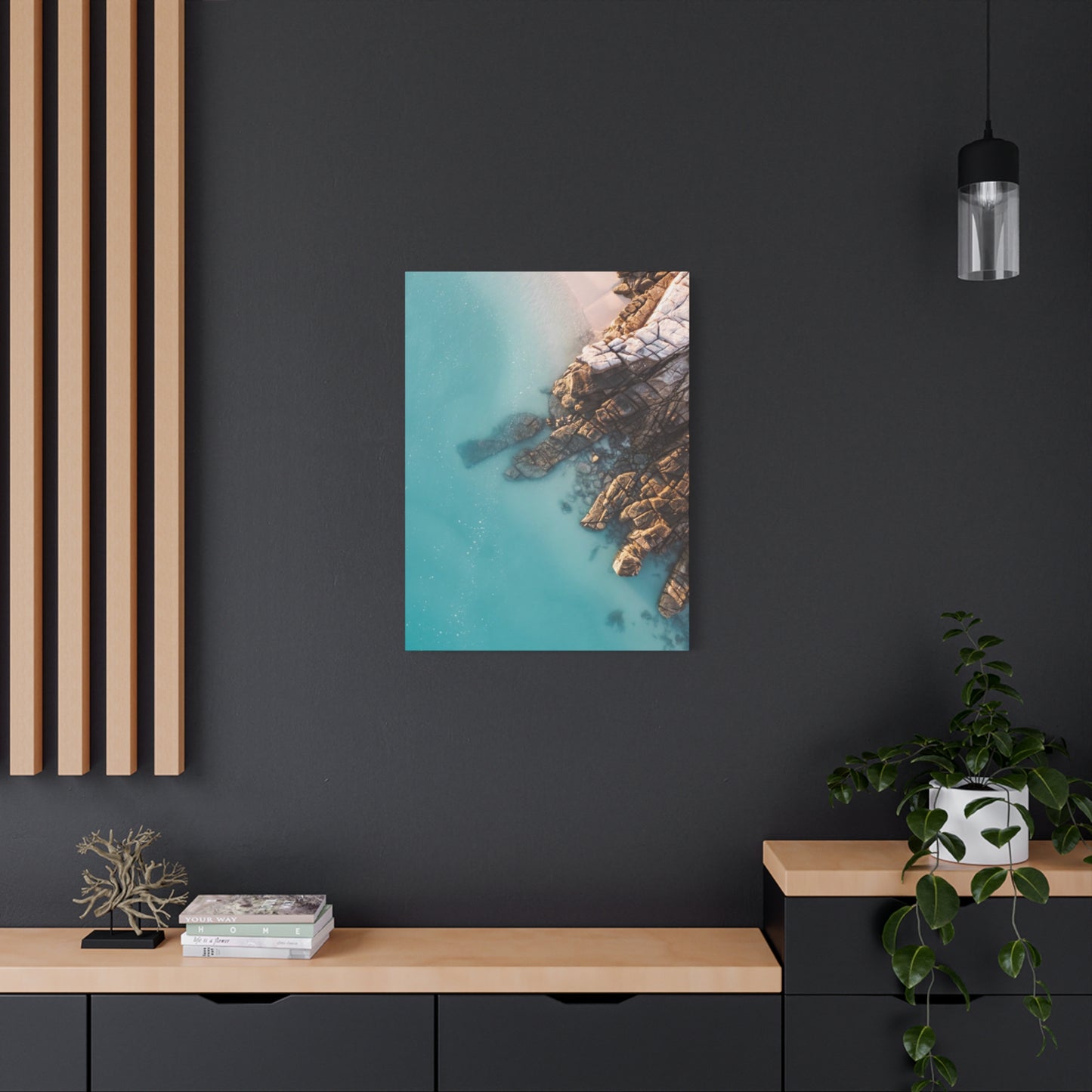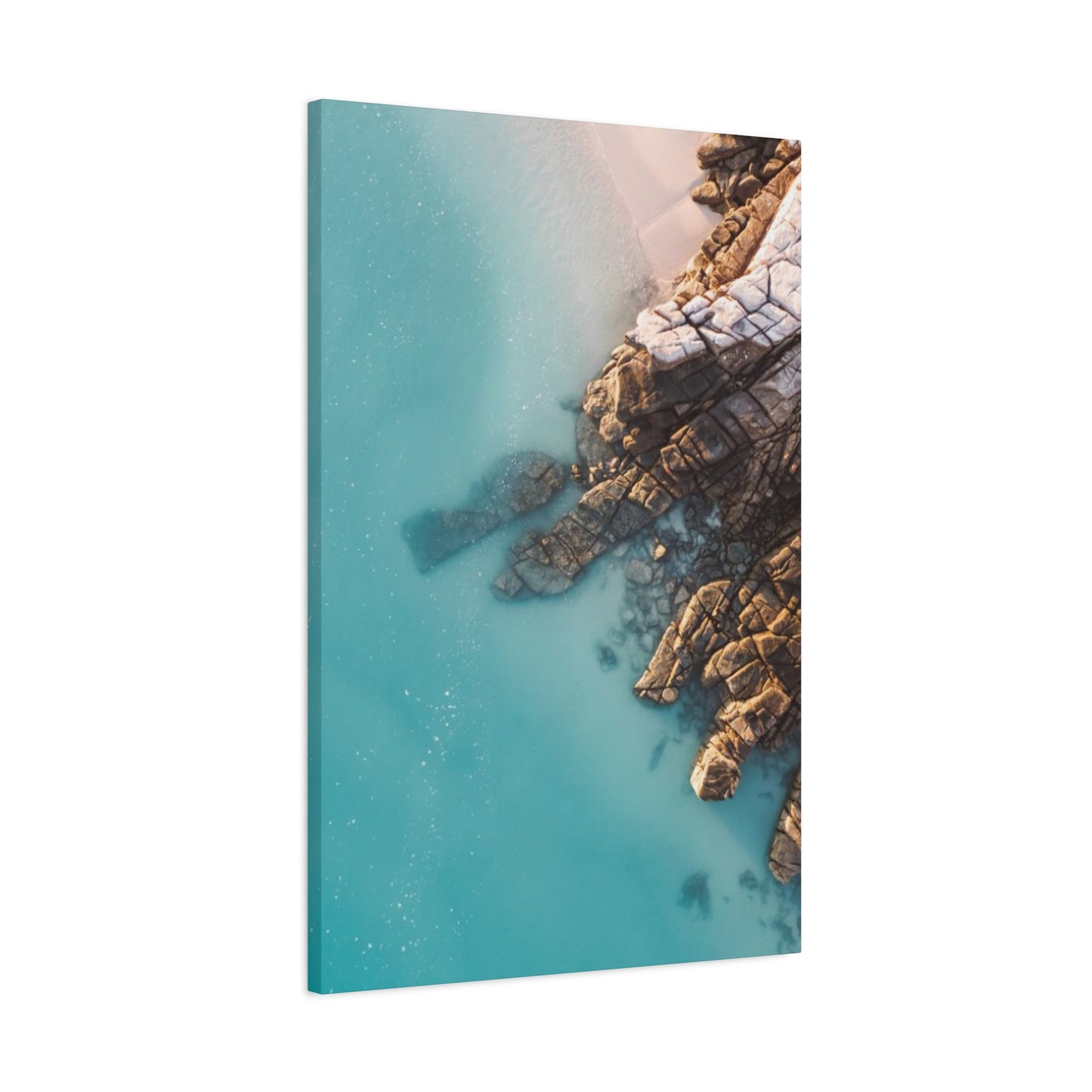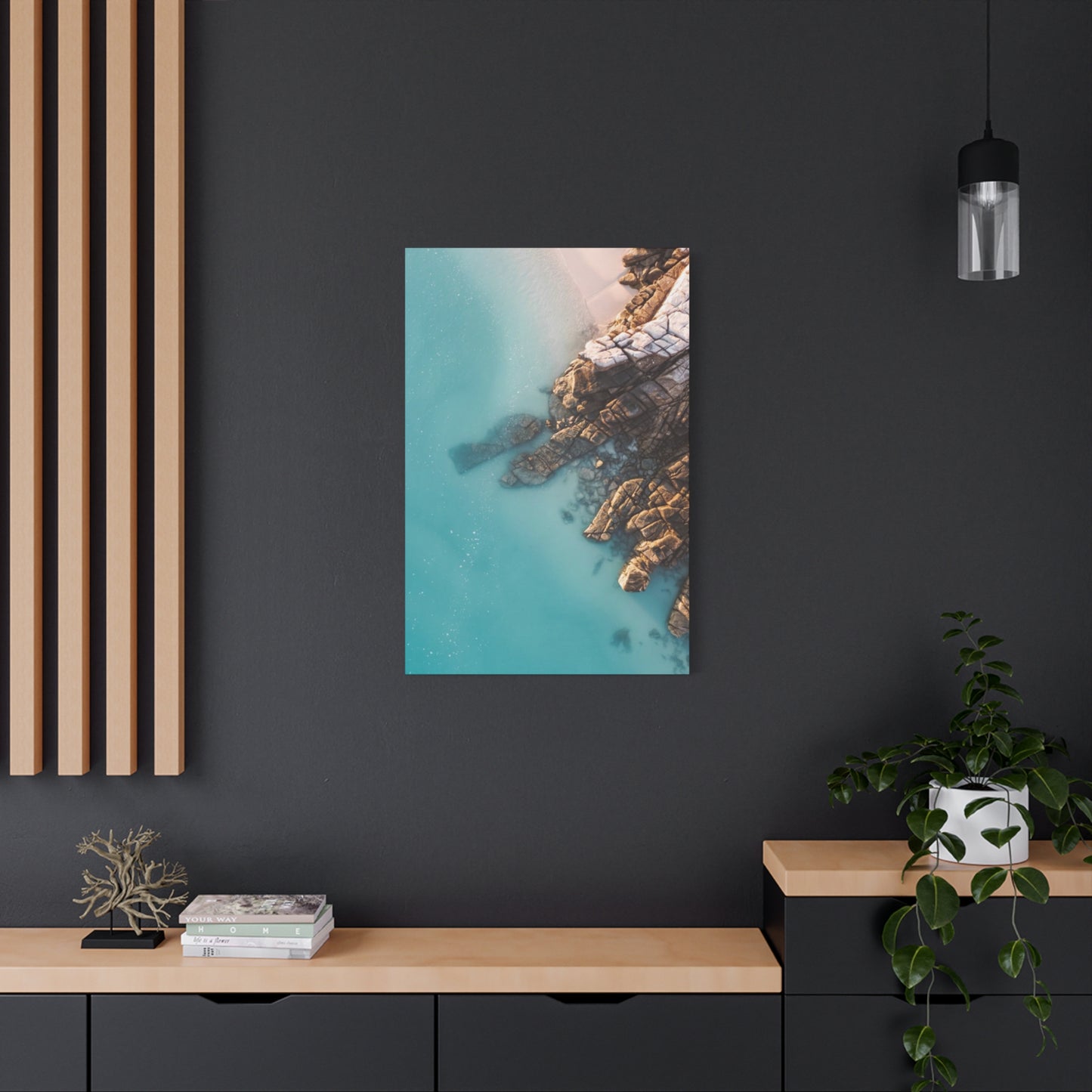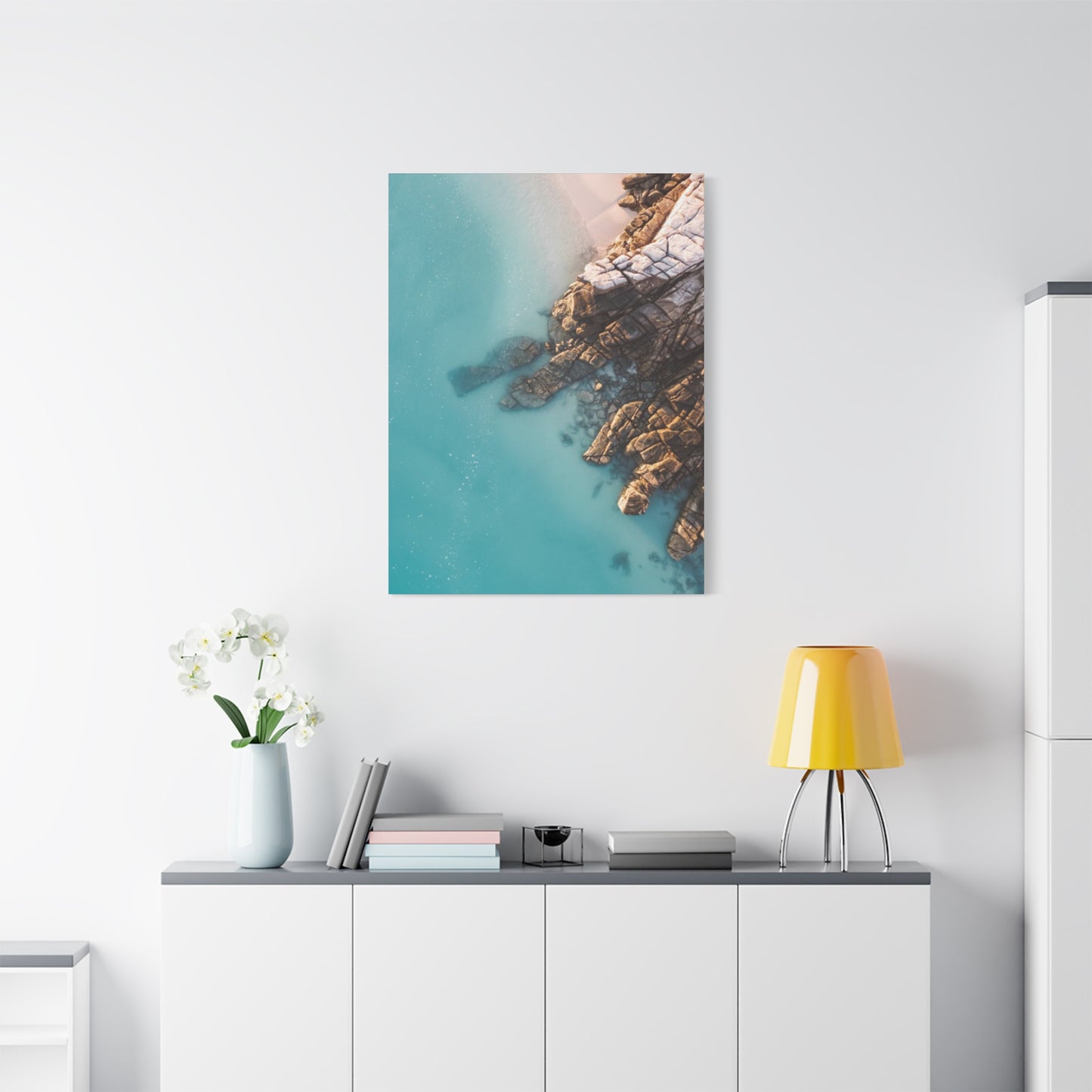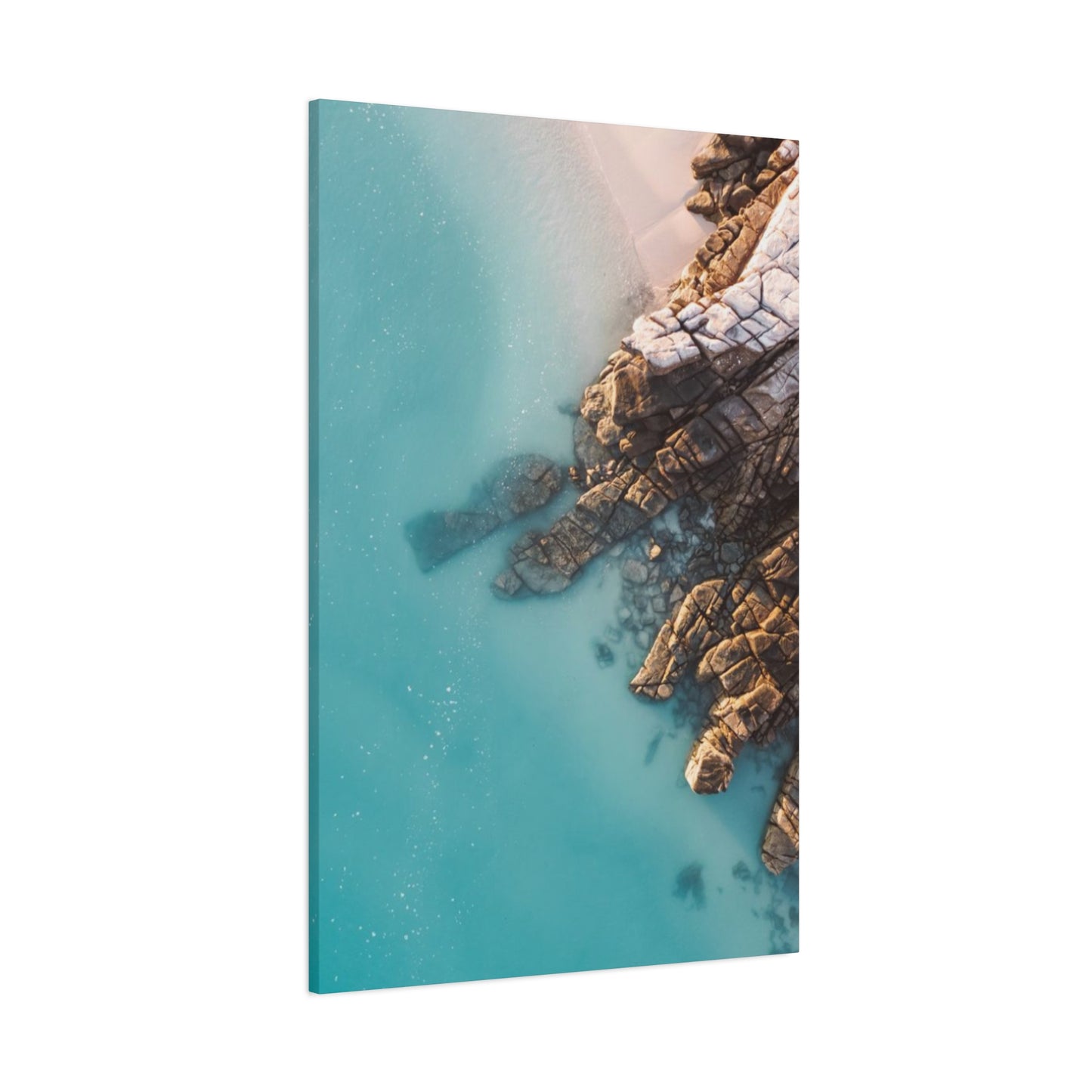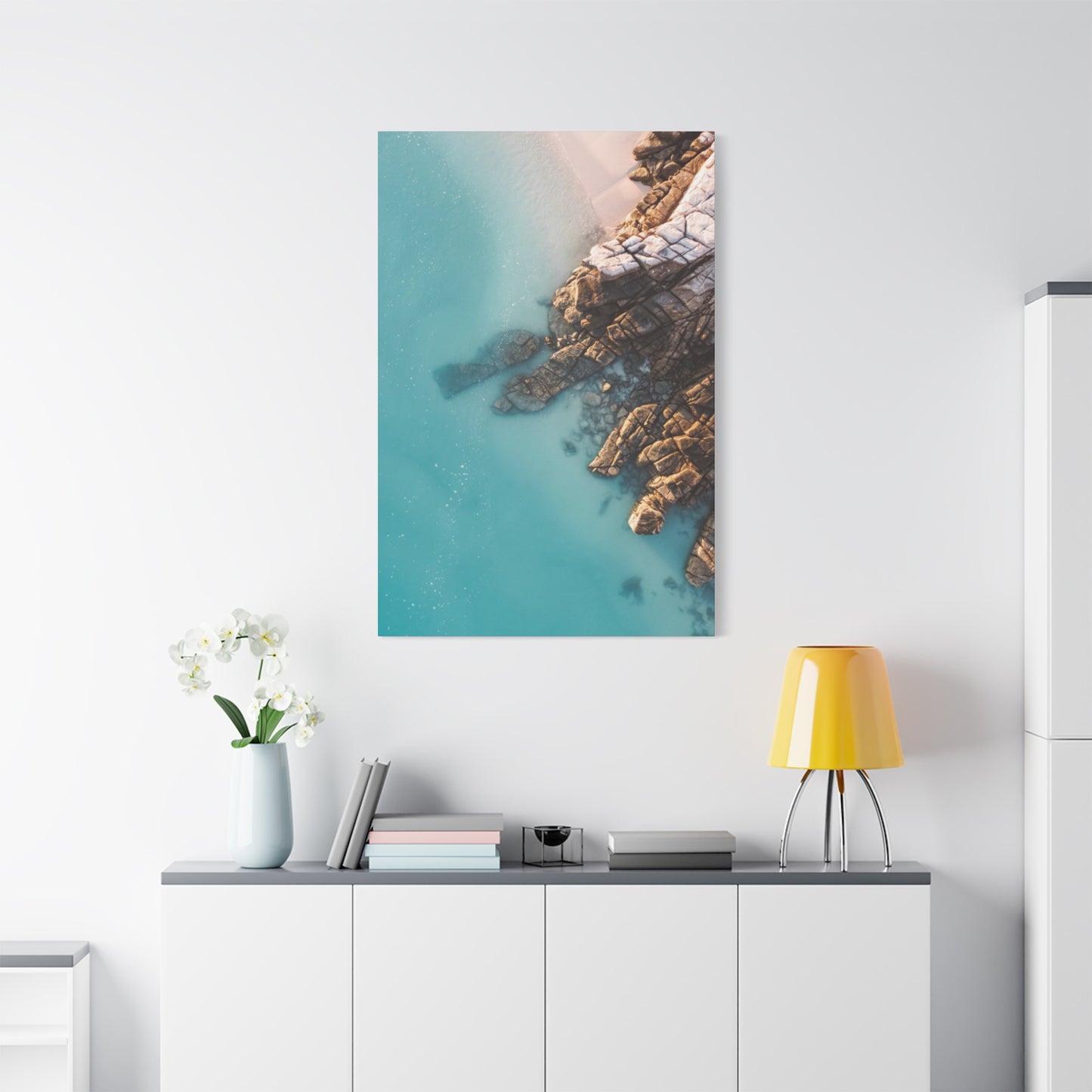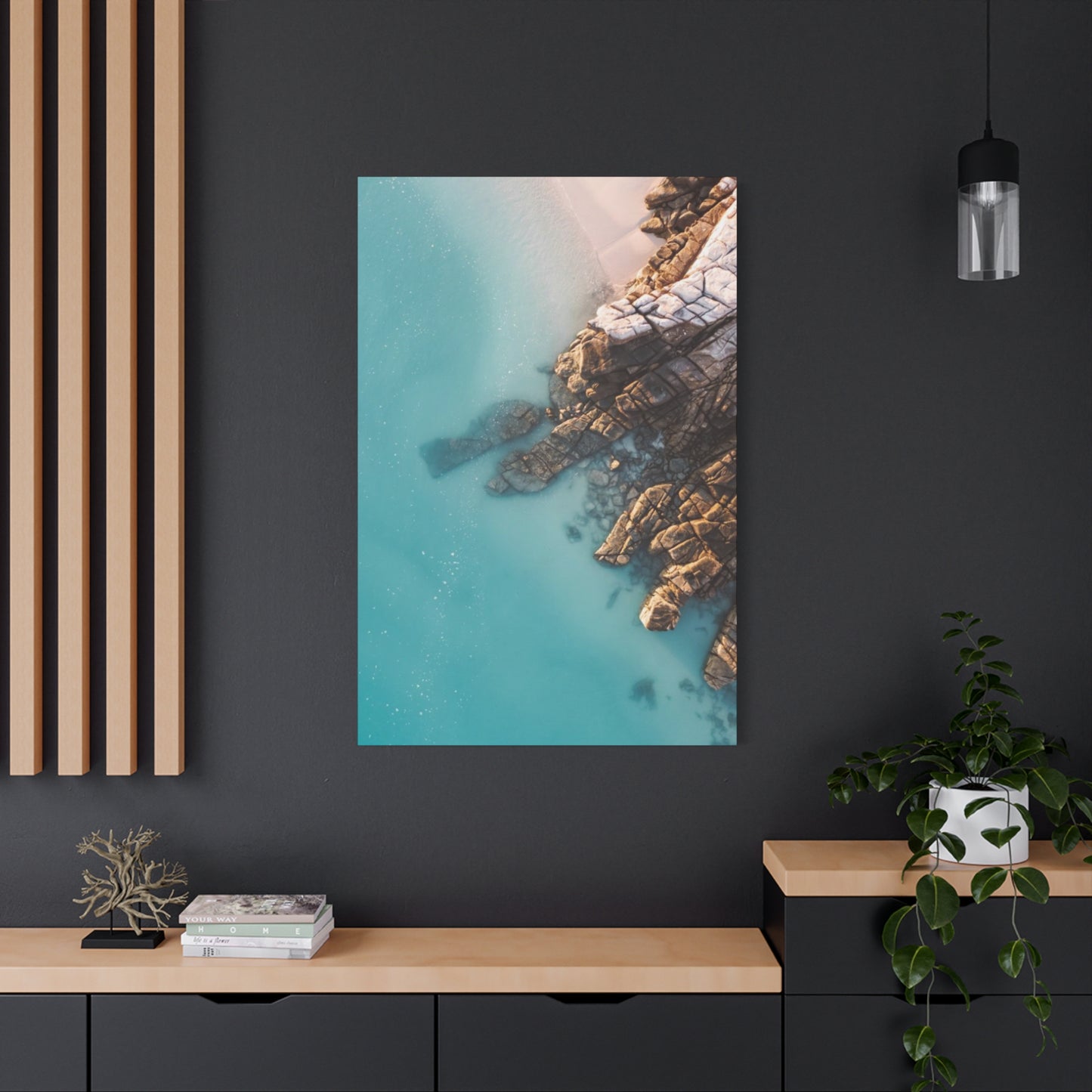The Beauty of the Beach: Seashore Wall Art for Relaxing Interiors
The allure of coastal environments has captivated humanity throughout history, drawing us toward the rhythmic dance of waves against shorelines and the infinite horizon where ocean meets sky. This timeless attraction translates beautifully into interior design through carefully selected seashore canvas prints that capture the essence of maritime tranquility. When you incorporate these artistic representations into your living environment, you create more than mere decoration; you establish an emotional connection to nature's most meditative landscapes. The visual impact of coastal artwork extends beyond aesthetic appeal, influencing mood, atmosphere, and the overall energy of your personal sanctuary.
Selecting the perfect seashore canvas prints requires understanding how different coastal scenes evoke distinct emotional responses. Gentle sunrise imagery bathing sandy beaches in golden light creates warmth and optimism, ideal for spaces where you begin your day. Conversely, twilight scenes featuring deeper blues and purples establish contemplative atmospheres perfect for bedrooms or meditation areas. The psychological benefits of surrounding yourself with ocean-inspired artwork include reduced stress levels, enhanced creativity, and improved mental clarity. Research consistently demonstrates that natural imagery, particularly water scenes, activates the parasympathetic nervous system, promoting relaxation and emotional balance.
The technical quality of seashore canvas prints significantly impacts their effectiveness as design elements. Premium reproductions utilize advanced printing technologies that capture subtle color gradations in sky reflections, the translucent quality of breaking waves, and intricate textures of weathered driftwood or smooth pebbles. High-resolution imaging ensures that every detail remains crisp and vibrant, even when viewed closely. Canvas material selection matters equally, with cotton-polyester blends offering durability while maintaining the organic texture that complements coastal themes. Gallery-wrapped edges eliminate the need for traditional framing, creating contemporary presentation that allows artwork to blend seamlessly with various architectural styles.
Understanding color psychology helps maximize the impact of seashore canvas prints in your environment. Soft aquamarine and seafoam greens promote healing and renewal, making them excellent choices for bathrooms or wellness areas. Deeper navy and cobalt tones convey stability and depth, anchoring living rooms or study spaces with sophisticated elegance. Sandy beige and warm taupe shades create neutral foundations that allow other design elements to shine while maintaining subtle coastal references. The interplay between these color families within a single piece or across multiple coordinated prints establishes visual harmony that feels both intentional and effortless.
Scale considerations prove crucial when incorporating seashore canvas prints into your design scheme. Oversized statement pieces command attention and establish focal points, particularly effective above sofas, beds, or dining areas. Medium-sized works offer versatility, functioning well in gallery wall arrangements or as standalone elements in smaller rooms. Intimate prints bring coastal charm to unexpected locations like hallways, powder rooms, or office nooks. The relationship between artwork dimensions and wall space affects perceived room proportions; horizontal orientations can make narrow spaces feel wider, while vertical compositions draw the eye upward, emphasizing ceiling height.
Transform Living Areas with Oceanfront Imagery
Living rooms serve as the heart of most homes, making them ideal candidates for impactful seashore canvas prints that set the tone for your entire dwelling. The selection process begins with assessing existing design elements including furniture styles, color palettes, and architectural features. Contemporary spaces with clean lines and minimalist aesthetics pair beautifully with abstract wave studies or simplified coastal horizons that emphasize form and color over detail. Traditional interiors accommodate classic seascapes featuring sailboats, lighthouses, or detailed beach scenes that tell visual stories and invite prolonged contemplation.
Arranging multiple seashore canvas prints creates dynamic visual interest while maintaining thematic cohesion. Triptych presentations divide single panoramic scenes across three panels, generating movement and drama particularly suited to expansive wall areas. Asymmetrical groupings of varied sizes establish contemporary energy while allowing each piece to maintain individual identity. Symmetrical arrangements convey formality and balance, appropriate for traditional settings or spaces where order and calm take precedence. Spacing between pieces should feel deliberate yet comfortable, typically ranging from two to four inches depending on frame sizes and overall composition goals.
Lighting dramatically influences how seashore canvas prints are perceived and appreciated throughout the day. Natural illumination reveals subtle color variations and creates living artwork that changes with shifting sun angles and weather conditions. Strategic placement near windows maximizes this effect while avoiding direct sunlight that might cause premature fading. Artificial lighting options include picture lights that highlight specific works, track lighting offering adjustable focus, and ambient fixtures that bathe entire walls in gentle illumination. Dimmable systems provide flexibility, allowing you to adjust atmosphere from bright and energizing to soft and meditative as occasions demand.
The psychological impact of incorporating seashore canvas prints into living spaces extends to social dynamics and family interactions. Ocean imagery serves as conversation starters, inviting guests to share their own beach memories and travel experiences. The calming influence of coastal scenes can reduce tension during gatherings, creating more relaxed and enjoyable social environments. For families, shared appreciation for maritime artwork can become bonding experiences, especially when pieces commemorate actual vacation destinations or hold special significance. This emotional layering transforms decoration into meaningful personal expression.
Seasonal rotation of seashore canvas prints maintains visual freshness and allows different moods to dominate at appropriate times. Summer months might feature vibrant, sun-drenched beach scenes celebrating warmth and activity. Autumn selections could emphasize stormy seas and dramatic skies reflecting seasonal intensity. Winter invites serene, misty coastal landscapes promoting introspection and cozy contemplation. Spring welcomes gentle sunrise imagery and pastel color palettes suggesting renewal and possibility. This approach prevents visual fatigue while honoring the cyclical nature of both seasons and personal emotional needs.
Maintenance practices ensure seashore canvas prints retain their beauty and impact over years of display. Regular dusting with soft, dry cloths prevents particle accumulation that dulls colors and obscures details. Avoiding harsh chemicals protects canvas surfaces and printed inks from degradation. Humidity control proves particularly important, as excessive moisture can cause canvas warping or mold development while extreme dryness leads to cracking. Climate-controlled environments between sixty and seventy degrees Fahrenheit with forty to fifty percent relative humidity provide optimal preservation conditions. Periodic inspection allows early detection of any issues requiring professional conservation attention.
Bedroom Sanctuaries Enhanced by Coastal Scenery
Bedrooms represent our most private retreats, spaces where we begin and end each day, making them prime locations for carefully selected seashore canvas prints that promote rest and rejuvenation. The selection criteria differ from public spaces, prioritizing tranquility over visual excitement. Soft-focus imagery featuring gentle waves lapping against pristine shores induces the relaxation necessary for quality sleep. Muted color palettes dominated by blues, greens, and neutrals avoid the stimulation that brighter hues might provide. Horizontal compositions mirror the restful position of sleep while reinforcing the endless horizon's meditative qualities.
Placement strategies in bedrooms consider sightlines from both standing and reclining positions. The wall opposite the bed typically receives the most attention, making it ideal for primary artwork that serves as a visual anchor when entering the room and a contemplative focus from bed. Side walls accommodate smaller companion pieces that enhance the coastal theme without overwhelming the space. Positioning seashore canvas prints where morning light first strikes them creates gentle awakening experiences, with sunlight gradually illuminating coastal scenes as natural alarm systems that ease transitions from sleep to wakefulness.
The relationship between bedroom furniture and wall art requires thoughtful coordination for cohesive design. Matching wood tones between canvas frames and bed frames, nightstands, or dressers establishes material harmony. Alternatively, deliberate contrast can highlight both elements; weathered gray driftwood frames might emphasize rich mahogany furniture while white or cream canvas wraps complement darker pieces. Bedding choices offer opportunities to echo colors from seashore canvas prints, creating layered design where artwork, textiles, and accessories reinforce the coastal narrative through repetition and variation.
Scale proportions in bedrooms demand particular attention to avoid overwhelming intimate spaces. Above-bed placement traditionally follows the guideline that artwork should span approximately two-thirds to three-quarters of the headboard width, creating visual balance without dominating. For walls without furniture, larger pieces can expand to fill more space, but maintaining breathing room around edges prevents claustrophobic feelings. In smaller bedrooms, single medium-sized prints often prove more effective than multiple pieces competing for attention in limited areas.
Color temperature selection significantly impacts bedroom atmospheres and sleep quality. Cool-toned seashore canvas prints featuring predominantly blue and green hues lower perceived room temperature and promote calmness conducive to rest. Warmer coastal imagery incorporating sunset oranges, peachy pinks, and golden sands creates cozier, more embracing environments particularly welcome in colder climates or during winter months. Understanding your personal response to different color temperatures guides selections that support your specific sleep needs and comfort preferences.
Thematic consistency across bedroom seashore canvas prints and other decorative elements prevents visual confusion and strengthens design impact. If your primary artwork features rocky coastlines with dramatic cliffs, supporting elements like throw pillows, area rugs, or decorative objects might incorporate similar geological references or complementary textures. Beach scenes with smooth sand and gentle waves pair naturally with flowing curtains, soft linens, and curved furniture forms. This holistic approach transforms individual design choices into comprehensive environments where every element contributes to unified coastal expression.
Office Environments Energized by Maritime Artwork
Professional workspaces benefit tremendously from thoughtfully selected seashore canvas prints that balance productivity requirements with wellness considerations. The modern understanding of workplace design recognizes that environments significantly influence focus, creativity, and overall job satisfaction. Coastal imagery introduces natural elements into often artificial settings, providing visual respite from screens and paperwork while maintaining professional appropriateness. The key lies in selecting pieces that inspire without distracting, energize without overwhelming, and personalize without becoming too casual.
Strategic placement in home offices maximizes the benefits of seashore canvas prints while supporting workflow efficiency. Positioning artwork within the peripheral vision range rather than directly in the primary sightline allows for brief mental breaks without encouraging extended daydreaming. Placing coastal scenes on walls facing your desk provides destinations for intentional pause, inviting you to lift your gaze from immediate tasks for momentary refreshment. This practice aligns with the twenty-twenty-twenty rule recommended by vision specialists: every twenty minutes, look at something twenty feet away for twenty seconds to reduce eye strain.
The psychological effects of maritime artwork in professional settings extend beyond immediate aesthetic pleasure. Ocean imagery activates associations with vacation, relaxation, and freedom, providing mental counterbalance to work pressures and deadlines. This juxtaposition can actually enhance productivity by reducing stress hormones and preventing the mental fatigue that diminishes performance over extended work sessions. The expansive quality of seascape horizons promotes big-picture thinking and creative problem-solving, while the rhythmic nature of waves suggests persistent progress and patient accumulation of effort toward goals.
Color selection for office seashore canvas prints should align with the type of work performed in the space. Creative professionals might embrace more vibrant coastal imagery with unusual perspectives or artistic interpretations that stimulate imagination and unconventional thinking. Analytical work environments benefit from calmer, more structured compositions featuring clear horizons and organized elements that subtly reinforce logical thinking and systematic approaches. Client-facing home offices require professional presentation, suggesting sophisticated coastal artwork with refined execution rather than casual beach snapshots or overtly decorative pieces.
Lighting considerations in office settings differ from residential applications due to screen usage and task lighting requirements. Glare prevention becomes paramount; seashore canvas prints should not reflect light sources in ways that create visual discomfort or interfere with computer monitors. Matte or satin finishes typically perform better than high-gloss options in these contexts. Ambient lighting should illuminate artwork sufficiently for appreciation without competing with task lighting focused on work surfaces. Adjustable systems provide flexibility for different activities and times of day, supporting both focused work and contemplative breaks.
Professional credibility concerns sometimes arise when personalizing office spaces, but seashore canvas prints offer sophisticated solutions that bridge personal expression and workplace appropriateness. High-quality reproductions of recognized maritime photographers or accomplished seascape painters convey cultural appreciation and aesthetic discernment. Abstract interpretations of coastal themes provide visual interest while maintaining professional restraint. Custom pieces featuring locations significant to your career journey or personal achievements add narrative depth that can facilitate client connections and professional relationships without oversharing personal information.
Kitchen and Dining Spaces Refreshed by Seaside Themes
Kitchens and dining areas represent gathering points centered around nourishment, conversation, and daily rituals, making them excellent candidates for seashore canvas prints that enhance these social and sustenance functions. The practical considerations in these spaces differ from other rooms due to humidity, temperature fluctuations, and potential exposure to cooking residues. Canvas selections should prioritize durability and cleanability while maintaining the visual appeal that justifies their presence in high-activity zones.
Thematic connections between coastal imagery and culinary spaces feel natural and appropriate. Ocean environments provide seafood, coastal cultures feature distinctive cuisines, and waterfront dining represents cherished experiences for many people. These associations make seashore canvas prints particularly fitting for kitchen and dining room decoration. Imagery might include fisherman at work, seaside markets displaying fresh catches, peaceful beach dining scenes, or simple wave studies that evoke the refreshing quality associated with both ocean breezes and palate-cleansing courses.
Size and scale considerations in dining areas often center around the table as the room's functional and visual anchor. Artwork above sideboards or buffets should relate proportionally to these furniture pieces, typically spanning sixty to seventy-five percent of their width. In open-concept spaces where kitchens flow into dining areas, coordinated seashore canvas prints can define zones while maintaining visual continuity. Smaller pieces work well in breakfast nooks or kitchen walls between cabinets, bringing coastal charm to functional areas without interfering with workflow or storage.
Color palette selection in kitchen and dining spaces often references both existing design elements and the psychological effects of hues on appetite and social interaction. Warmer coastal scenes incorporating sunset tones, sandy beaches, and golden light create inviting atmospheres that stimulate appetite and encourage lingering over meals. Cooler palettes featuring deep ocean blues and seafoam greens provide refreshing counterpoints in kitchens where cooking generates heat, creating psychological cooling effects. Neutral coastal imagery with emphasis on whites, creams, and soft grays offers versatile foundations that complement various cabinet colors and countertop materials.
Practical maintenance becomes more important in kitchen environments where airborne grease, moisture, and temperature variations challenge artwork longevity. Protective sealants can be applied to canvas surfaces, creating barriers against environmental factors while maintaining visual quality. Strategic placement away from direct cooking areas reduces exposure to the harshest conditions. Regular cleaning with appropriate methods prevents buildup that could permanently stain or damage prints. Some homeowners choose to rotate kitchen seashore canvas prints more frequently than in other rooms, accepting that these pieces may have shorter lifespans due to environmental stresses while enjoying the flexibility to refresh the space regularly.
Social dynamics in dining spaces influence the selection and arrangement of seashore canvas prints. Artwork should enhance conversation rather than dominate it, suggesting compositions that interest without demanding constant attention. Multiple smaller pieces arranged gallery-style create visual texture that rewards brief glances throughout meals without pulling focus from dining companions. Single larger works establish ambiance while remaining sufficiently cohesive to fade into pleasant background once social interaction begins. The goal is artwork that enriches the dining experience without competing with it, serving as conversational catalyst initially but gracefully receding as human connection takes precedence.
Bathroom Retreats Transformed by Ocean Inspiration
Bathrooms increasingly function as personal spas, spaces dedicated to self-care and rejuvenation beyond mere hygiene. Seashore canvas prints perfectly complement this elevated purpose, transforming utilitarian rooms into coastal retreats that soothe the senses and calm the mind. The intimate scale of most bathrooms allows even smaller prints to make significant visual impact, while the association between water, cleansing, and ocean environments creates natural thematic harmony that feels both intentional and effortless.
Moisture management represents the primary technical consideration when incorporating seashore canvas prints into bathrooms. While the thematic fit seems perfect, the practical challenges of humid environments require thoughtful solutions. Options include moisture-resistant coatings applied to canvas surfaces, strategic placement away from direct shower spray, enhanced ventilation to reduce overall humidity levels, or selection of specifically treated bathroom-appropriate prints. Some manufacturers offer marine-grade canvas products designed for high-moisture environments, combining aesthetic appeal with necessary durability.
Design approaches for bathroom seashore canvas prints range from literal to abstract interpretations of coastal themes. Literal representations might feature specific beach locations, detailed wave studies, or recognizable maritime elements like shells, starfish, or sea glass. Abstract approaches emphasize colors, textures, and feelings associated with coastlines without depicting specific elements. Minimalist compositions featuring simple horizon lines or subtle wave patterns maintain clean, spa-like aesthetics while providing coastal references. The choice depends on overall bathroom design philosophy and personal preference regarding representation versus suggestion.
Color psychology in bathrooms often prioritizes cleanliness, freshness, and relaxation, all qualities naturally associated with coastal environments and effectively conveyed through appropriate seashore canvas prints. Crisp whites and pale aquas suggest purity and cleanliness while maintaining seaside references. Deeper ocean blues create more dramatic, enveloping atmospheres ideal for soaking tubs and extended bathing rituals. Seafoam greens and turquoise tones balance energy and calm, suitable for bathrooms that serve both morning preparation and evening unwinding functions. Neutral sandy tones provide warmth without heaviness, particularly effective in smaller bathrooms where darker colors might feel oppressive.
Spatial planning in bathrooms must account for functional requirements while maximizing opportunities for artistic enhancement. The wall facing the toilet often receives extended viewing time, making it prime real estate for engaging seashore canvas prints that reward contemplation. Above-tub placement creates focal points for soaking sessions, providing visual destinations during relaxation practices. Powder rooms, typically smaller and visited briefly, benefit from single impactful pieces rather than complex arrangements. Master bathrooms with more generous dimensions can accommodate multiple coordinated prints that develop coastal themes more fully.
Lighting design significantly affects how seashore canvas prints function in bathroom environments. Natural light from windows enhances authentic color representation and creates living artwork that changes throughout the day. Privacy considerations often require window treatments that diffuse natural light, creating soft, flattering illumination that also benefits canvas artwork. Artificial lighting options include sconces flanking mirrors that can be positioned to illuminate nearby artwork, recessed ceiling fixtures providing general illumination, and dedicated picture lights highlighting specific pieces. Dimmers allow adjustment between bright task lighting for grooming and softer ambient lighting for bathing relaxation.
Children's Spaces Enriched by Playful Coastal Themes
Designing children's rooms with seashore canvas prints offers opportunities to combine aesthetic appeal with developmental benefits, creating environments that stimulate imagination while providing calming influences. The versatility of coastal themes accommodates various age ranges and interests, from toddlers captivated by simple wave patterns and bright colors to teenagers appreciating more sophisticated surf photography or abstract ocean interpretations. This adaptability makes seashore canvas prints smart investments that can evolve with children's changing tastes through thoughtful selection and rotation.
Educational opportunities embedded in coastal artwork enrich children's environments beyond decoration. Seashore canvas prints featuring diverse marine ecosystems introduce biological concepts and environmental awareness. Images depicting various coastal geographies teach about different landforms and climates. Historical maritime scenes spark interest in navigation, exploration, and cultural development. Abstract wave studies illustrate principles of pattern, repetition, and natural mathematics. Parents and educators can leverage these visual resources to initiate conversations, support school curriculum, and cultivate curiosity about natural sciences and world geography.
Color considerations for children's seashore canvas prints balance developmental appropriateness with design sophistication. Younger children respond enthusiastically to brighter, more saturated hues that capture attention and convey energy. Primary and secondary colors in coastal contexts might include vivid turquoise waters, bright yellow sunshine, bold orange sunsets, and clean white foam on breaking waves. As children mature, palettes can transition toward more nuanced shades and complex color relationships that challenge visual perception and support developing aesthetic sensibilities. This progression mirrors cognitive development while maintaining thematic continuity.
Safety factors require attention when installing seashore canvas prints in children's spaces. Secure mounting prevents accidents from falling artwork, particularly important in rooms where active play occurs. Lightweight canvas generally presents fewer injury risks than heavier framed pieces, though proper installation remains essential. Edge protection through gallery wrapping eliminates sharp corners that glass-covered frames might present. Non-toxic materials and inks ensure that curious toddlers exploring their environment encounter only safe substances. These practical considerations allow parents to beautify children's spaces without compromising safety priorities.
Thematic coordination between seashore canvas prints and room functionality supports various childhood activities and needs. Study areas benefit from calming coastal scenes that reduce distraction while preventing the sterility that might diminish creativity. Play zones can incorporate more dynamic maritime imagery featuring boats, waves in motion, or active beach scenes that complement energetic activities. Sleep areas require gentler compositions similar to adult bedroom considerations, with soft colors and peaceful scenes promoting restful atmospheres. This zoned approach within single rooms creates visual cues supporting transitions between different activities and states of alertness.
Personalization opportunities make seashore canvas prints particularly meaningful in children's spaces. Custom pieces incorporating the child's name alongside coastal themes create special ownership and pride. Photographs from family beach vacations transformed into canvas prints build positive associations and preserve cherished memories as daily visual reminders. As children develop artistic interests, their own ocean-inspired creations can be professionally printed on canvas, validating their creative efforts and building confidence. This personal investment in room decoration encourages children to respect and maintain their environments while developing aesthetic appreciation.
Hallways and Transitional Spaces Enhanced by Coastal Imagery
Hallways and transitional areas often receive insufficient design attention despite significant traffic and viewing time. These spaces present unique opportunities for seashore canvas prints that create visual interest, establish thematic connections between rooms, and transform purely functional passages into enjoyable journey experiences. The challenge lies in accommodating narrower dimensions, varied lighting conditions, and brief viewing durations while maintaining sufficient impact to justify the decorative investment.
Gallery wall approaches prove particularly effective in hallway applications, allowing multiple seashore canvas prints to develop narrative progressions or thematic variations across extended wall lengths. Arrangements might follow chronological journeys from dawn to dusk, progress from calm to stormy seas, or explore different coastal environments from tropical beaches to rugged cliffs. This sequential presentation encourages movement through the space while rewarding repeated passage with new details and relationships discovered over time. Consistent spacing, frame styles, and mounting heights create cohesive presentations despite varying individual image content.
Lighting challenges in hallways without natural light sources require creative solutions to properly showcase seashore canvas prints. Track lighting systems offer flexibility, with adjustable heads directing illumination where needed. Wall-mounted picture lights provide focused highlighting while adding decorative elements themselves. LED strip lighting along ceiling edges creates ambient illumination that bathes entire hallways in gentle light suitable for artwork appreciation. Motion-sensor activation conserves energy while ensuring spaces illuminate when occupied, practical for transitional areas that may be empty for extended periods.
Scale relationships in narrow hallways demand careful consideration to avoid overwhelming limited space. Vertical orientations work particularly well, drawing eyes upward and emphasizing ceiling height rather than accentuating corridor narrowness. Medium-sized pieces typically prove most appropriate, large enough to register visually without dominating limited wall areas. In wider hallways or landing areas, larger statement pieces can anchor spaces effectively. The viewing distance in hallways influences appropriate image complexity; simpler compositions with clear subjects read well from typical hallway sightlines, while intricate details may be lost or create visual confusion.
Thematic bridges created by hallway seashore canvas prints connect disparate rooms and establish home-wide design narratives. A coastal color palette introduced in hallway artwork might find echoes in adjacent room accessories, creating subtle visual threads that unify the home. Transitional spaces between public and private areas can feature imagery that shifts from energetic beach scenes near living spaces to calmer, more introspective coastal views approaching bedrooms. This intentional progression guides emotional and psychological transitions as residents move through their homes, supporting different activities and mindsets appropriate to various zones.
Maintenance advantages in hallway applications include minimal exposure to direct sunlight, cooking residues, or moisture that might affect seashore canvas prints in other locations. This protected environment allows artwork to retain color vibrancy and structural integrity over extended periods with minimal intervention. However, high traffic areas may accumulate dust more rapidly, requiring regular cleaning attention. The relative ease of maintenance in hallways makes these spaces appropriate for pieces that might require more care in other environments, expanding design possibilities while reducing long-term preservation concerns.
Seasonal Expressions Through Rotating Coastal Artwork
Seasonal rotation of seashore canvas prints offers dynamic approach to interior design that maintains visual freshness while honoring natural cycles and changing emotional needs throughout the year. This practice prevents the visual fatigue that can occur when surrounded by identical imagery indefinitely, while allowing different facets of coastal beauty to dominate at appropriate times. The practical implementation requires sufficient storage for pieces not currently displayed, organizational systems for tracking rotation schedules, and commitment to periodic change as integral to home maintenance rather than optional luxury.
Spring selections might emphasize renewal themes inherent in coastal environments. Imagery featuring gentle waves approaching pristine beaches suggests fresh starts and new possibilities. Pastel color palettes with soft pinks, light blues, and pale yellows mirror springtime skies and blooming coastal vegetation. Sunrise scenes capturing the moment when darkness yields to light metaphorically represent seasonal awakening from winter dormancy. These choices create optimistic atmospheres that align with longer daylight hours and increasing outdoor activity characteristic of spring months.
Summer expressions naturally gravitate toward energetic, sun-drenched seashore canvas prints celebrating warmth and vitality. Vibrant azure waters, bright sandy beaches populated with activity, and dramatic midday skies convey the season's exuberance and abundance. Images might include surfers riding waves, families enjoying shorelines, or boats dotting sparkling seas. Warmer color temperatures dominate, with golden sunshine, heated sand tones, and deep turquoise waters reflecting summer's intensity. These selections support active lifestyles and social gatherings typical of summer months while providing visual cooling through water imagery despite warmer outdoor temperatures.
Autumn transitions introduce more contemplative coastal imagery reflecting seasonal introspection and preparation for winter. Stormy seas with dramatic cloud formations mirror autumn's volatile weather patterns and emotional complexity. Cooler color palettes featuring steel grays, deep blues, and muted purples create cozier atmospheres as outdoor temperatures decline. Images of deserted beaches or solitary figures walking shorelines suggest the quieter, more reflective quality of autumn. Sunset scenes with rich oranges, deep reds, and golden highlights echo fall foliage while maintaining coastal themes. These choices acknowledge seasonal transitions while maintaining positive associations with maritime environments.
Winter selections often emphasize serenity, stillness, and subtle beauty found in coastal environments during colder months. Misty seascapes with limited visibility create mysterious, ethereal atmospheres. Monochromatic or near-monochromatic compositions featuring primarily grays, whites, and pale blues suggest winter's stripped-down aesthetic. Frozen shorelines, ice formations along coasts, or beaches under winter skies provide seasonal specificity while maintaining maritime connections. These minimalist approaches complement winter's tendency toward indoor focus and contemplative activities, creating supportive environments for reading, conversation, and quiet pursuits characteristic of the season.
Practical considerations for seasonal rotation include proper storage protecting seashore canvas prints from environmental damage during periods out of display. Climate-controlled storage areas prevent temperature and humidity fluctuations that could warp canvases or affect printed surfaces. Protective coverings shield artwork from dust accumulation and potential physical damage. Vertical storage prevents pressure damage from stacking while maximizing space efficiency. Labeling systems identifying each piece and its seasonal designation streamline rotation processes. Digital inventories with photographs facilitate planning and ensure all pieces receive regular display opportunities rather than some being forgotten in storage indefinitely.
Psychological benefits of seasonal seashore canvas print rotation extend beyond preventing visual boredom. This practice maintains active engagement with your environment, encouraging continued awareness and appreciation rather than the unconscious disregard that often develops toward permanent fixtures. The anticipation of seasonal changes and pleasure in rediscovering previously stored pieces creates positive rituals marking time's passage. Adapting your surroundings to align with natural cycles reinforces connection to broader environmental patterns, supporting wellness practices that honor circadian rhythms and seasonal variations in energy levels and emotional needs.
Architectural Considerations for Coastal Wall Decor
Architectural features significantly influence how seashore canvas prints integrate into spaces, with successful installations harmonizing with rather than fighting against existing structural elements. Understanding your home's architectural style guides appropriate selection and placement strategies that enhance both the artwork and the architecture itself. From contemporary lofts with industrial elements to traditional colonials with classical proportions, coastal imagery adapts to diverse contexts through thoughtful consideration of scale, style, and positioning.
Contemporary and modern architectural styles characterized by clean lines, open spaces, and minimalist aesthetics pair beautifully with equally streamlined seashore canvas prints. Abstract wave studies, simplified horizon compositions, or high-contrast black-and-white coastal photography complement rather than compete with architectural restraint. Oversized single pieces often work better than gallery walls in these contexts, maintaining the uncluttered sensibility central to modern design philosophy. Frameless gallery wraps reinforce contemporary presentations, eliminating decorative borders that might introduce unwanted traditional elements.
Traditional architectural styles including colonial, craftsman, and victorian designs accommodate more detailed, representational seashore canvas prints that echo the ornamentation inherent in these structures. Classic maritime scenes featuring sailboats, lighthouses, or detailed beach landscapes suit formal rooms with crown molding, wainscoting, and other architectural embellishments. Coordinating frame styles bridge artwork and architecture; traditional wood frames with carved details or gilded finishes complement period features while providing appropriate presentation for coastal imagery. Symmetrical arrangements of multiple pieces reflect the balanced proportions fundamental to traditional architectural design.
Transitional styles blending contemporary and traditional elements offer maximum flexibility for seashore canvas prints, accommodating diverse approaches from abstract to representational, minimal to detailed. These eclectic spaces benefit from thoughtful curation that doesn't rigidly adhere to single aesthetic principles but maintains overall coherence through color coordination, scale relationships, or thematic consistency. Mixed media approaches might combine photographic prints with painted interpretations or abstract studies, creating visual interest through variety while unified coastal themes prevent chaotic results.
Ceiling height dramatically affects appropriate sizing and placement of seashore canvas prints, with taller spaces accommodating and often requiring larger pieces to maintain visual presence. Standard eight-foot ceilings suit medium-sized works, typically ranging from twenty-four to forty inches in their largest dimension. Nine to ten-foot ceilings open possibilities for pieces reaching forty-eight to sixty inches, creating more dramatic statements. Soaring ceilings in contemporary spaces or historic buildings with exceptional height may require truly oversized installations or vertical arrangements of multiple pieces to prevent artwork from appearing lost against expansive wall areas.
Architectural color palettes established through permanent elements like flooring, cabinetry, and fixed finishes provide foundations for selecting complementary seashore canvas prints. Coordinating artwork colors with existing architectural elements creates cohesive environments where all components support unified design visions. Alternatively, strategic contrast can highlight both architectural features and artwork; coastal imagery dominated by cool blues provides striking counterpoint to warm wood tones, while neutral seascapes allow colorful architectural elements to dominate. Understanding color relationships between permanent and changeable elements prevents expensive mistakes and supports successful long-term satisfaction with design choices.
Architectural lighting including windows, skylights, and fixed electrical fixtures influences both where seashore canvas prints can be placed and how they'll be perceived. South-facing walls receive abundant natural light throughout the day, requiring careful consideration of fade-resistant inks and coatings. North-facing walls offer consistent, cool light ideal for showcasing artwork without harsh direct sun exposure. Skylights create dramatic natural spotlights but may necessitate UV-filtering glazing to protect vulnerable artworks. Fixed lighting positions sometimes dictate optimal artwork placement to maximize illumination while avoiding problematic glare or shadowing effects.
Cultural and Historical Perspectives on Maritime Art
Understanding the rich tradition of maritime art deepens appreciation for contemporary seashore canvas prints while connecting personal spaces to broader cultural narratives spanning centuries. Coastal imagery occupies central positions in art history across diverse cultures and periods, reflecting humanity's enduring fascination with seas, shores, and the liminal spaces where land meets water. This historical context enriches modern installations, transforming decorative choices into participation in continuing cultural conversations about nature, beauty, and our relationship with maritime environments.
Dutch Golden Age marine painting established many conventions still influencing seashore canvas prints today. Seventeenth-century masters like Willem van de Velde the Younger created detailed ship portraits and naval battle scenes that demonstrated technical virtuosity while documenting important historical events and commercial activities. The dramatic skies and careful attention to wave structure in these works influenced subsequent generations of maritime artists. Contemporary prints drawing on this tradition emphasize realistic representation, attention to atmospheric conditions, and the interplay between human activity and natural forces characteristic of Dutch marine painting.
British maritime art flourished during the eighteenth and nineteenth centuries as Britain's naval power expanded globally. Artists like J.M.W. Turner revolutionized seascape painting, moving from topographically accurate representations toward more expressive, atmospheric interpretations that captured the sublime power and beauty of oceans. Turner's innovative techniques for depicting light, weather, and water influenced countless subsequent artists and established emotional interpretation as equally valid to documentary accuracy in maritime art. Modern seashore canvas prints embracing abstraction, emphasizing mood over detail, or exploring light effects on water owe debts to Turner's groundbreaking approaches.
American maritime art developed distinct characteristics reflecting the nation's coastal geography and relationship with seas. Winslow Homer's powerful wave studies and coastal scenes captured the drama and danger of North Atlantic waters while celebrating the resilience of coastal communities. The Hudson River School artists incorporated maritime elements into broader landscape traditions, depicting harbors, rivers meeting oceans, and coastal vistas that emphasized natural beauty and national identity. These traditions inform contemporary American coastal photography and painting, with many seashore canvas prints continuing emphasis on natural power, authentic representation, and celebration of specific regional coastal characteristics.
Asian artistic traditions offer different perspectives on maritime imagery that increasingly influence Western seashore canvas prints. Japanese woodblock prints, particularly Hokusai's iconic wave studies, demonstrate sophisticated understanding of wave structure combined with decorative sensibilities and spiritual symbolism. Chinese landscape painting traditions incorporate water elements as essential components of cosmic harmony, with techniques for depicting mist, waves, and shorelines that emphasize suggestion over explicit detail. Contemporary artists drawing on these traditions create seashore canvas prints that balance representation with abstraction, incorporate symbolic meanings beyond literal depiction, and emphasize harmony between natural elements.
Indigenous coastal cultures worldwide developed rich artistic traditions depicting maritime environments from perspectives often absent from European art history. Pacific Northwest Native American art incorporates ocean creatures and wave patterns in highly stylized, symbolically rich compositions that convey cultural narratives and spiritual beliefs. Aboriginal Australian art represents coastal environments through distinctive visual languages that map ancestral connections and sacred relationships with sea country. Contemporary seashore canvas prints drawing on these traditions offer alternatives to conventional Western maritime imagery while raising important questions about cultural appropriation, authentic representation, and respectful engagement with indigenous artistic heritage.
Modern and contemporary movements transformed maritime art through various stylistic innovations that expanded possibilities for seashore canvas prints. Impressionist approaches emphasized light effects and immediate visual impressions over detailed representation. Expressionist interpretations used coastal imagery to convey emotional states and psychological depths. Abstract expressionists found in waves, tides, and horizons perfect subjects for exploring formal relationships, gestural mark-making, and pure color interactions. Photorealist painters demonstrated that intense detail and precision could reveal new truths about familiar subjects. Each movement contributed techniques, perspectives, and philosophical approaches that inform contemporary seashore canvas print production and selection.
Customization and Personalization Options
Custom seashore canvas prints transform generic decoration into personally meaningful artwork that tells individual stories, preserves precious memories, and expresses unique aesthetic sensibilities. Advances in digital printing technology and online service platforms have democratized customization previously available only through expensive commissioned artwork or limited artistic skills. Understanding available options empowers creation of truly unique pieces that reflect personal experiences, preferences, and creative visions while maintaining professional quality that honors both subject matter and display context.
Personal photography conversion represents most direct path to customized seashore canvas prints, transforming vacation snapshots, family beach outings, or artistic coastal explorations into permanent wall art. Digital image files can be uploaded to printing services that assess resolution, recommend appropriate sizes, and produce professional-quality prints from customer-provided images. This approach creates powerfully meaningful artwork connecting daily environments to specific memories and experiences. The challenge lies in ensuring source images possess sufficient quality for enlargement; smartphone photos may work for smaller prints but lack resolution for substantial sizes, while dedicated camera images typically support larger dimensions with maintained sharpness.
Image editing and enhancement services bridge gaps between captured images and ideal final prints. Professional retouching corrects exposure issues, enhances colors, removes unwanted elements, and optimizes compositions through cropping or straightening. Color grading applies cohesive tonal treatments that unify images or create specific moods. Sky replacement transforms dull overcast conditions into dramatic sunsets or perfect blue skies. These interventions raise questions about authenticity and manipulation, but when tastefully applied, they realize photographic potential constrained by lighting conditions, equipment limitations, or shooting circumstances beyond photographer control.
Text incorporation adds personal dimensions to seashore canvas prints through meaningful quotes, family names, significant dates, or location identifiers. Typography selection dramatically affects overall impression, with options ranging from elegant scripts suggesting romance and sophistication to bold sans-serif fonts conveying contemporary confidence. Text placement requires careful consideration to enhance rather than overwhelm coastal imagery; subtle positioning in less critical compositional areas maintains visual focus while adding informational or emotional layers. Color choices for text should ensure readability while harmonizing with overall color palette, often achieved through selecting tones present in the image itself.
Collage formats combine multiple images into single seashore canvas prints, particularly effective for representing extended vacations, various coastal locations, or family history across time. Grid arrangements present images in organized matrices suggesting systematic documentation or comparative study. Overlapping layouts create dynamic, organic compositions with varied depth and visual movement. Panoramic sequences tell visual stories through progressive images suggesting temporal or spatial journeys. These multi-image approaches pack more content and meaning into single pieces while creating visual complexity that rewards extended viewing and invites memory recall or storytelling.
Artistic filters and effects transform photographic seashore images into various aesthetic interpretations. Watercolor effects soften details and enhance colors, creating dreamy, romantic impressions. Oil painting filters add texture and brushstroke appearance, elevating snapshots toward fine art status. Black and white conversions emphasize form, contrast, and tonal relationships while removing color distraction. Vintage treatments apply aged appearances suggesting nostalgia and timelessness. These transformations allow non-artists to achieve painterly or stylized results from photographic sources, expanding creative possibilities beyond straightforward reproduction.
Size and shape customization extends beyond standard rectangular formats to create distinctive presentations. Panoramic formats emphasize coastal horizons and shoreline extensions, creating dramatic horizontal emphasis particularly suited to specific wall proportions. Square formats offer contemporary alternatives to traditional rectangles, working well in modern interiors or for social media images optimized for square presentation. Circular or oval shapes create unexpected variations that draw attention through format distinction alone. Triptych or multi-panel divisions split images across multiple canvases, adding dimensionality and contemporary flair to wall presentations.
Border and edge treatments provide finishing options affecting final presentation. Gallery wraps extend images around canvas edges, eliminating visible borders and creating seamless appearance particularly suited to modern aesthetics. Museum wraps use neutral colors or mirror imaging on edges, maintaining image integrity on front surface. Decorative borders add frames within the print itself, creating formal presentations without physical frames. Custom edge colors coordinate with dominant image hues or room decor, subtle details contributing to overall design cohesion. These choices significantly influence how seashore canvas prints integrate with surrounding environments and architectural features.
Conclusion
The Beauty of the Beach: Seashore Wall Art for Relaxing Interiors highlights the transformative power of coastal imagery to infuse interiors with serenity, natural elegance, and a sense of escape. Seashore wall art captures the timeless beauty of the ocean, sandy beaches, and tranquil horizons, creating spaces that evoke calm, contemplation, and a subtle connection to nature. By bringing the rhythm of waves, the softness of sand, and the openness of the horizon into living environments, this style of artwork provides both aesthetic refinement and emotional relief, turning homes into sanctuaries of peace and rejuvenation.
At its core, seashore wall art embodies the essence of balance and harmony. The visual language of coastal scenes — gentle waves lapping against the shore, the muted tones of wet sand, and the interplay of sunlight and water — conveys tranquility while stimulating the senses. Artists interpret these scenes in diverse mediums, from realistic watercolor and acrylic paintings to high-resolution photography and abstract renditions. Each approach allows for a distinct experience, whether it’s the immersive realism of a sunlit beach or the meditative abstraction of ocean textures and color gradients. The versatility of seashore art ensures it appeals to a wide range of design preferences and emotional moods.
In interior design, beach-themed wall art offers remarkable adaptability. Its neutral and calming palette — soft blues, sandy beiges, muted whites, and occasional coral or sunset tones — complements a variety of interior styles, from coastal and bohemian to minimalist modern or classic chic. Large-scale canvases serve as commanding focal points above sofas, beds, or dining areas, immediately establishing a soothing atmosphere. Smaller prints, framed or unframed, can be arranged in clusters or gallery walls, creating continuity and narrative throughout hallways or living spaces. Regardless of placement, seashore art imbues interiors with a sense of openness and natural light, making rooms feel more expansive and inviting.
Lighting plays a critical role in enhancing the impact of seashore artwork. Natural sunlight can highlight subtle textures in paint or print detail, reflecting off oceanic blues and sandy neutrals to create an authentic, luminous effect. Ambient or accent lighting can simulate the warmth of sunrise or the soft glow of evening, transforming the artwork’s mood and offering versatility across different times of day. Proper lighting ensures that the calming qualities of the seashore are fully realized, reinforcing both visual appeal and emotional ambiance.
Beyond aesthetic considerations, seashore wall art also supports psychological well-being. Research shows that imagery of nature, particularly water, reduces stress, improves focus, and fosters a sense of calm. The ocean’s expansive horizon and rhythmic movement promote mindfulness and reflection, encouraging homeowners to slow down and connect with moments of peace amidst the busyness of daily life. In this way, seashore wall art serves as more than decoration; it is a tool for cultivating emotional balance, relaxation, and restorative energy.
Artists and designers often leverage composition, perspective, and color to evoke mood in coastal art. A wide-angle beach view may convey freedom and spaciousness, while a close-up of gentle waves or seashell textures offers intimacy and tactile richness. Sunrise or sunset scenes utilize warm tones to evoke comfort, while overcast skies and soft waves create contemplative, meditative atmospheres. This flexibility ensures that seashore wall art can align with both functional needs and emotional intentions, whether a room is meant for active socializing or quiet reflection.
Ultimately, The Beauty of the Beach demonstrates that seashore wall art is not merely decorative but transformational. It connects interiors to the natural world, balancing aesthetic appeal with emotional resonance. Each wave, sandy texture, and horizon line serves as a visual cue for calm, continuity, and elegance, making living spaces feel more harmonious and rejuvenating.


















